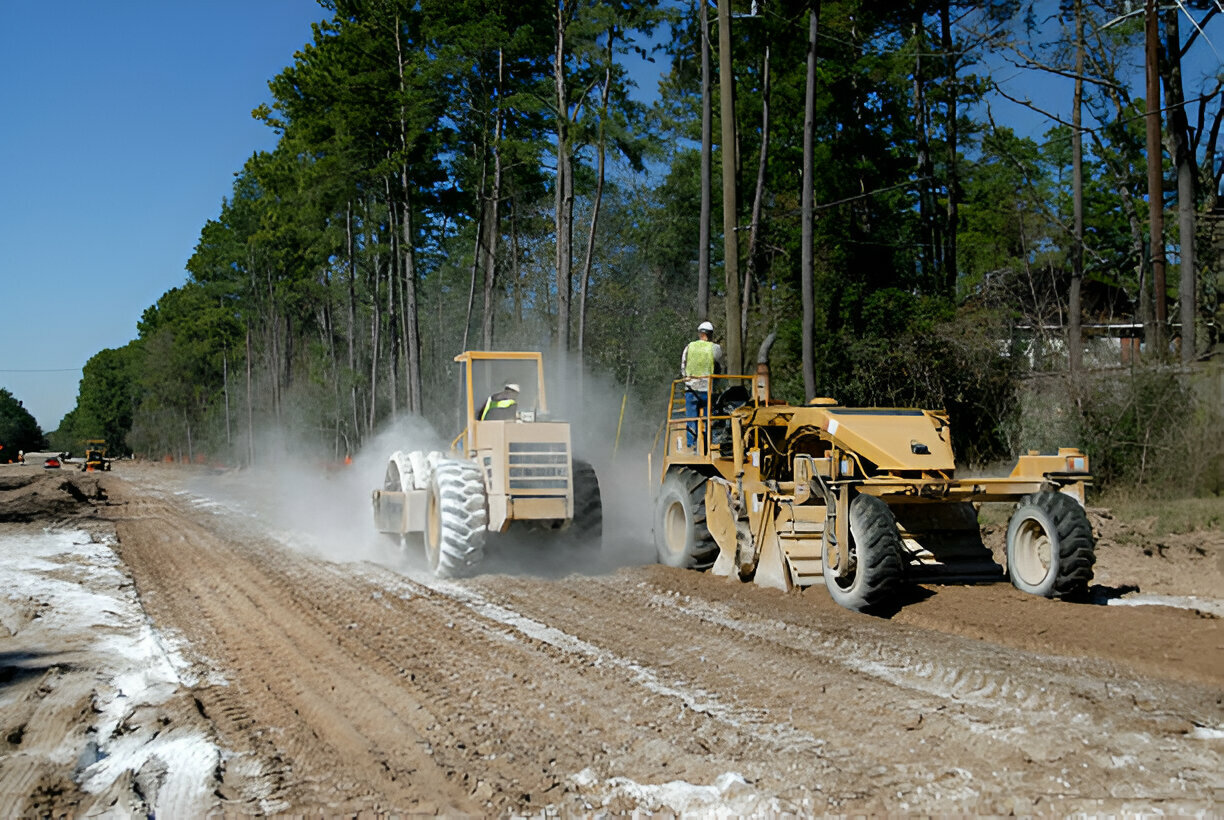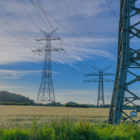Soil stabilization in construction is crucial for enhancing the load-bearing capacity of the soil, ensuring the durability and longevity of structures. It stops soil from washing away, which can cause big problems like landslides and other disasters that hurt buildings and people. Also, soil stabilization helps stop the ground from sinking too much, so less fixing up is needed later.
By making soil stronger and less affected by things like water and temperature changes, soil stabilization helps protect the environment and saves resources. Using good soil stabilization methods is necessary to ensure construction projects are safe, sturdy, and don’t cost too much, no matter where they’re built.
Top 5 Methods for Soil Stabilization in Construction
Chemical Stabilization:
Chemical stabilization means using special chemicals to make soil stronger and last longer. One common chemical is lime, which mixes with clay in the soil to make it more stable and stronger. Another one is cement, which sticks soil particles together, making it better at holding up heavy stuff.
To do this, the chemical is mixed with the soil either where it is or somewhere else, and then it’s squished down to make it right. Chemical stabilization works great for soils with lots of clay, making them stay strong and not wash away easily.
Mechanical Stabilization:
Mechanical stabilization techniques use machines to strengthen the soil and improve its ability to hold up heavy stuff. One method is soil compaction, where big machines squish the soil to make it more solid and dense.
Another method is soil reinforcement, where special materials like geogrids or steel strips are put into the soil to strengthen it. These reinforcements help spread out the weight more evenly, so the soil doesn’t move around as much and stays stable. Mechanical stabilization works well for all kinds of soil and can be adjusted to fit the needs of different projects.
Biological Stabilization:
Biological stabilization uses nature’s tools to strengthen soil and stop it from washing away. One way is using plants, where roots hold the soil together, preventing erosion and strengthening the soil. Grass, bushes, and trees with deep roots are often planted in places where soil erosion is a problem, which helps keep soil stable for a long time.
Also, bioengineering methods like soil bioengineering and biotechnical slope stabilization use live plants and natural materials to strengthen slopes and stop erosion. These biological stabilization methods are good for the environment and keep soil and ecosystems healthy and strong.
Electrochemical Stabilization:
Electrochemical stabilization is a method that uses electricity to change soil properties and strengthen it. One method is electrokinetic stabilization, where electricity causes chemical reactions and moves ions in the soil. This can change the soil’s acidity, reduce water, and make it more compact, which strengthens it.
Electrochemical stabilization works well for soils with lots of clay because it breaks down the clay and improves the soil. Another method is electro-osmotic stabilization, where electricity controls how water moves in the soil, reducing swelling and making it stronger. These electrochemical methods give precise control over soil and can be used in different construction projects.
Thermal Stabilization:
Thermal stabilization techniques use heat to change soil and make it stronger. One way is thermal desorption, where heat removes pollutants from soil, making it better and tougher. This involves heating the soil to high temperatures to turn pollutants into vapor, which is then taken away and treated separately.
Another method is soil drying, where heat removes water from the soil, making it stronger. This is often used to make roads and building foundations more solid and stable. Thermal modification methods like soil cementation also use heat to activate special materials that stick soil together, making it stable. Thermal stabilization is a quick and effective way to treat soil and can be used in many different construction projects.
Conclusion
Soil Stabilization in Construction is crucial for ensuring project success. Good methods like chemical, mechanical, biological, electrochemical, and thermal stabilization are really important. These techniques strengthen the soil, stop erosion, and stabilize things. When you use the right soil stabilization methods, construction projects can happen safely and smoothly.





